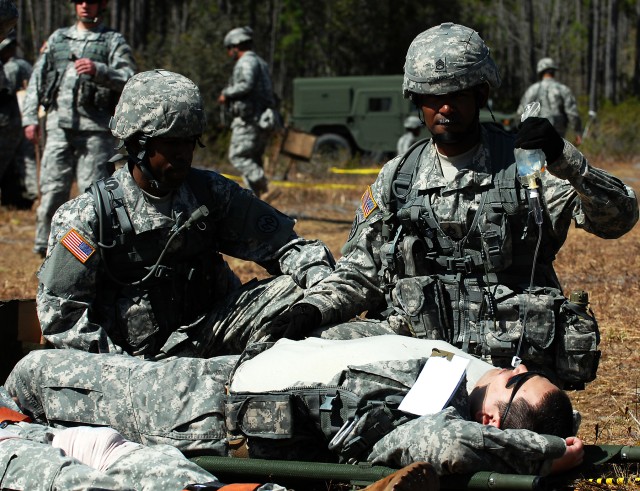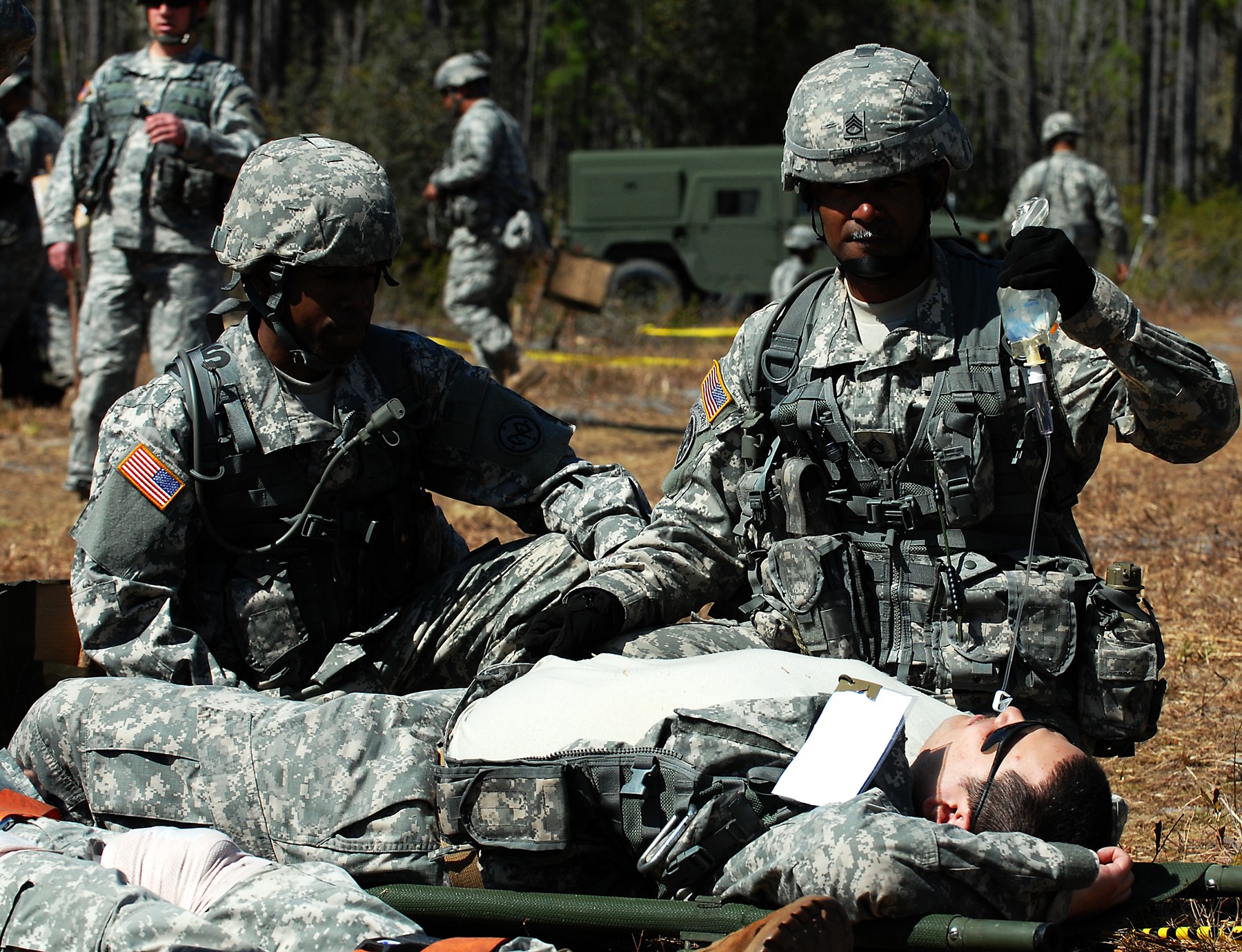CAMP BLANDING, FLA. (March 14) -- A loud bang marked the beginning of a mass casualty exercise for the medics of Headquarters Battery, 1st Battalion, 258th Field Artillery Regiment during the unit's annual training at Camp Blanding, Florida.
As the New York Army National Guard battalion's firing batteries conducted training and gunnery exercises on the M119A2 howitzer, the unit's medical section ran a simulation of an enemy artillery round impacting in the headquarters battery's operating area.
At the sound of the simulated explosion, medics raced from the battalion aid station to find and triage "casualties" -- other headquarters battery and Golf Company Soldiers who were tagged with various kinds of injuries, from minor scrapes and bruises to gunshot wounds and broken bones.
"When we heard the explosion, we knew we had to respond to the scene," said Pfc. Richard Latkovich, a Headquarters Battery combat medic from Manorville, N.Y.
The battery's seven medics worked with Soldiers trained as combat life savers, triaging the wounded and carrying severely "wounded" Soldiers to the aid station tent or to a helicopter MEDEVAC site. Latkovich said Soldiers with minor injuries received treatment and then helped with more severely-wounded patients.
"We held a lot of classes to train the other Soldiers on what to do in a (mass casualty scenario)," Latkovich said. "I thought they did a real good job."
While the medics and combat life savers hurried from patient to patient, Soldiers from Headquarters Battery and Golf Company established a security perimeter around the area.
Combat life savers and medics practiced applying bandages, carrying wounded troops, and even inserting real intravenous lines.
"The medics did what they're supposed to do, and we did it in a timely fashion," said Capt. Earl Dawkins, a physician's assistant from Staten Island who serves as the battalion's PA. He said the "immediate" patients -- the ones who needed to be evacuated or treated immediately -- were taken care of within 45 minutes of the start of the exercise.
"Everyone worked well together," he said. "People cooperated."
Once the exercise ended, Headquarters Battery commander Capt. Kar Chu discussed the action with his Soldiers.
"You guys reacted immediately," Chu told the gathered battery. "You saw people in need, and you got right to it. That's critical."
Lt. Col. Michael Hoblin, the 1st of the 258th's battalion commander, stressed the importance of having a well-trained team of medics and Soldiers who know how to provide first aid.
"If you yell for help, there's going to be an aid and litter team that's going to rush out to you," he said. "They're going to bring you back here, and a medic's going to take care of you."
Latkovich said it was all in a day's work for the headquarters medics.
"We just did what we were trained to do," he said.




Social Sharing